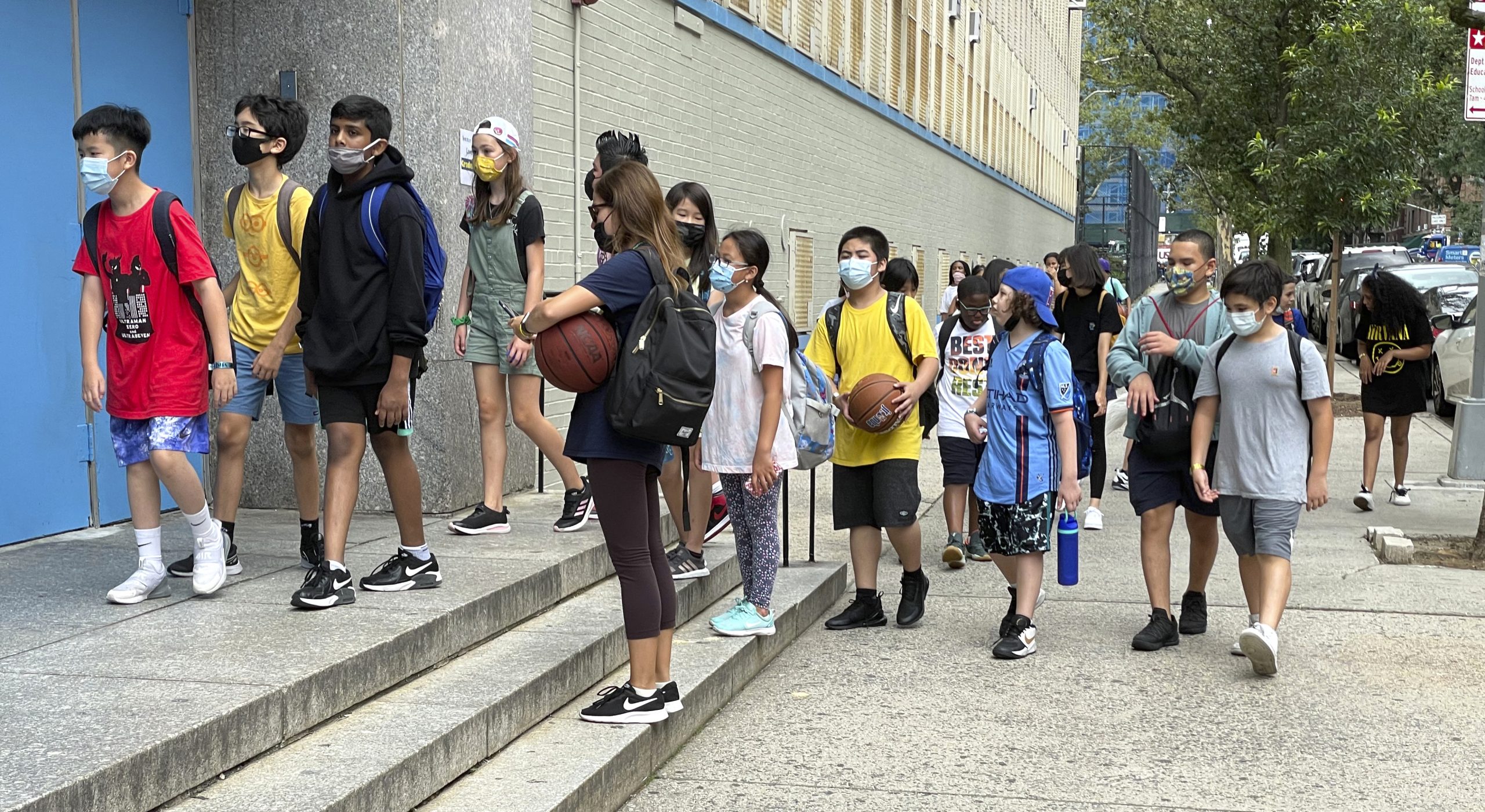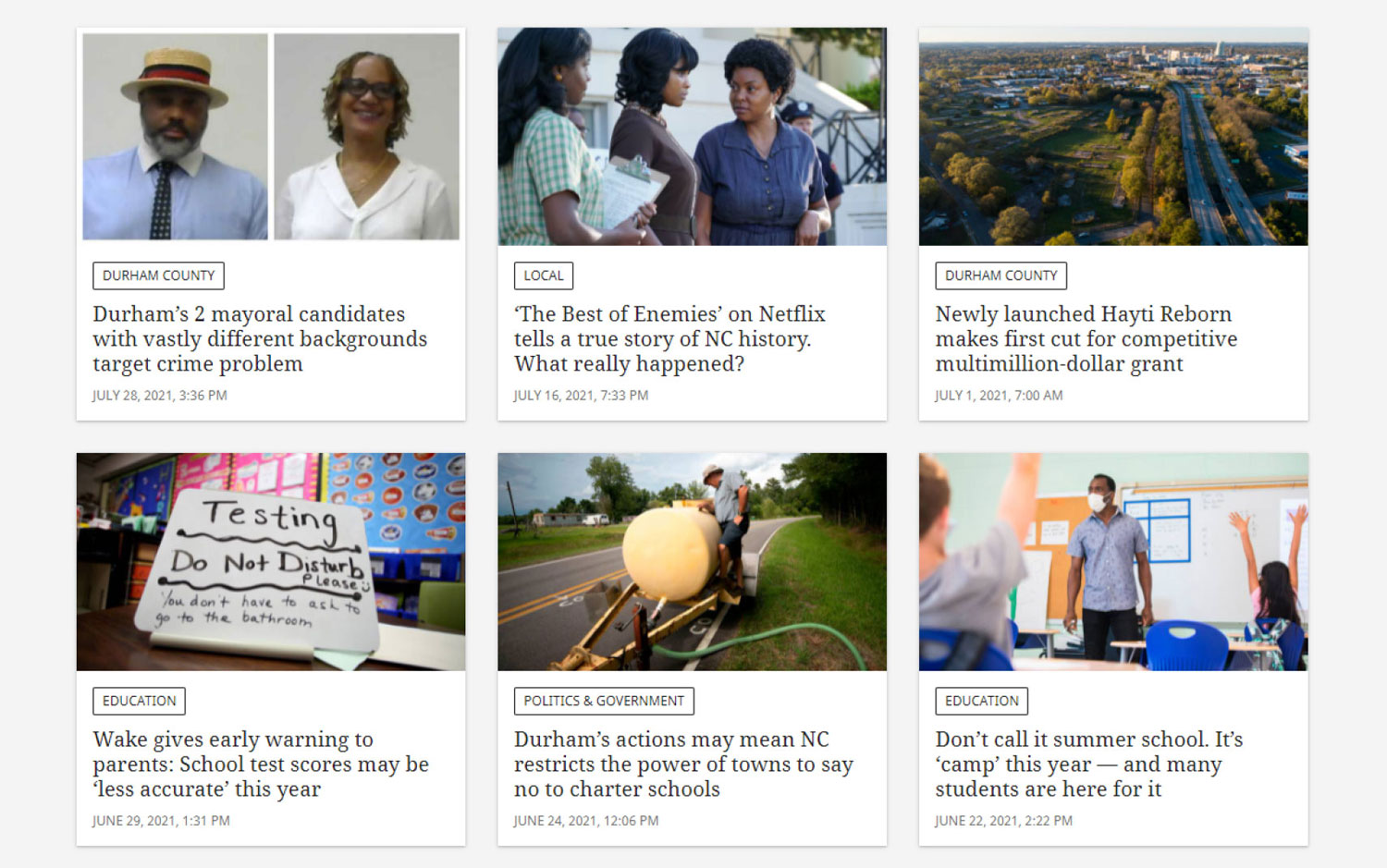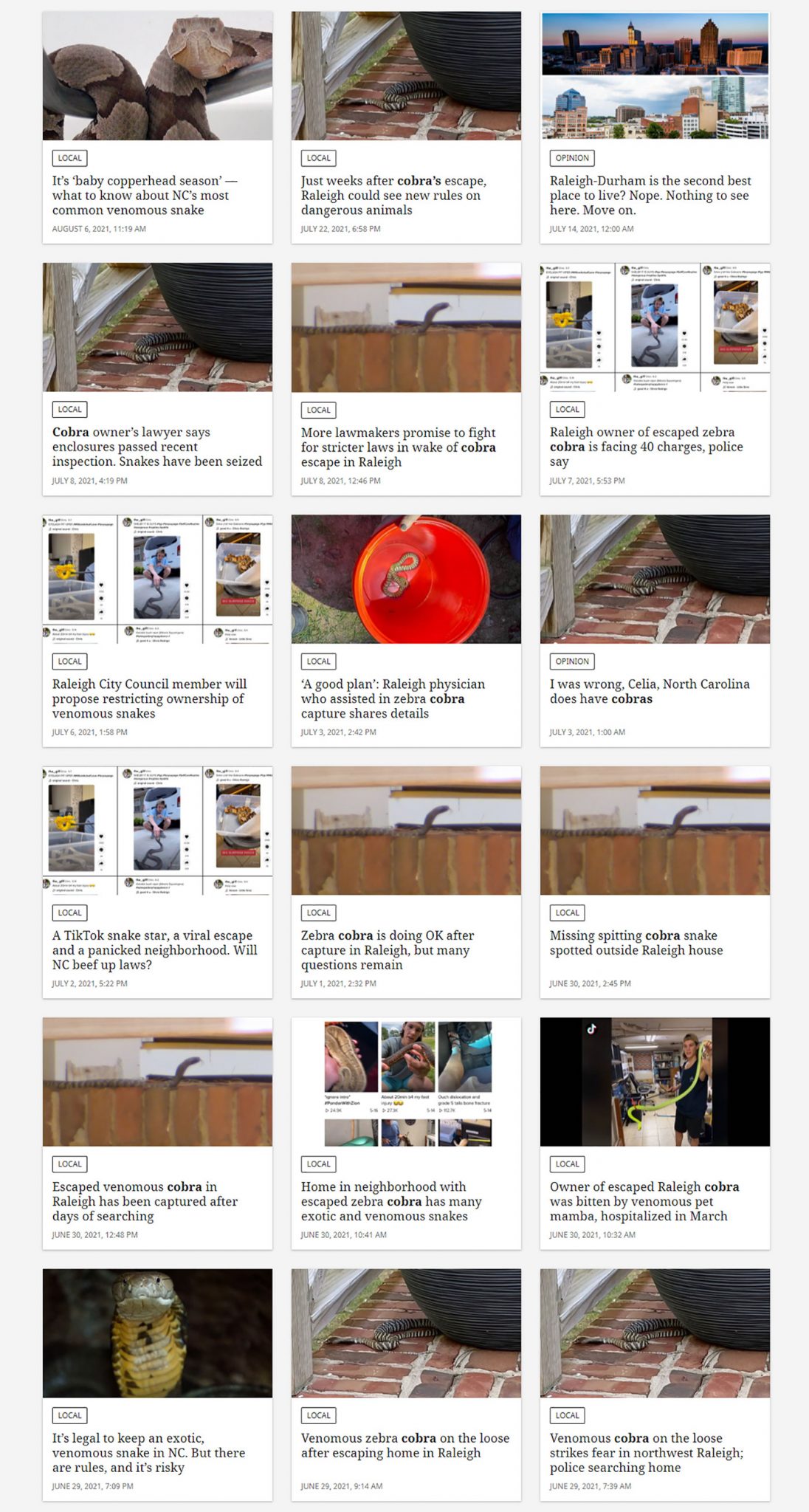
Parents around the country are freaking out and holding their collective breath as a new school year begins. My kid has been back at in-person school for about a month, and we’ve been averaging about two robocalls a week about new cases of Covid at school. What’s worse, the school district’s Covid plans, 20 months into the pandemic, seem to be another fly-by-the-seat-of-the-pants affair.
Our school didn’t post its Covid protocols on its website until three weeks after classes started. Quarantine criteria are opaque, and what you do catch in tidbits from other parents doesn’t exactly fill you with confidence. Parents are pulling together ad hoc efforts on Facebook to crowdfund air purifiers for individual classrooms. Until lots of parents asked, there were no plans or equipment to allow students to eat outside to help minimize exposure during unmasked lunch time.
We don’t know what percentage of the school staff are vaccinated. There’s no regular Covid testing of staff or students, and the school board and district administrators seem to be just now starting to really explore that topic. Parents are in the dark on so many fronts, lacking information to even be able to assess whether things are slogging along O.K. or if all Covid hell is breaking loose and we just don’t know it.
It’s a mess. But this is not a post on the mess. This is a post on the journalism about the mess.
“School board and city council meetings are going uncovered,” begins one New York Times article, sounding the alarm on how the collapse of local news is causing a “national crisis.”
“When you lose a small daily or a weekly, you lose the journalist who was gonna show up at your school board meeting,” says a journalism professor researching news deserts.
“What happens when weekly newspapers disappear? No one at city council and school board meetings …” declares a Nieman Reports piece.
If you pay any attention to the state of the journalism industry and the journalism industry’s bemoaning of its state, then you probably have seen some version of the “without journalists, who will cover your school board meetings??” line. Covering school board meetings (and by extension, the schools), the argument goes, is one of those crucial journalistic functions that serves the community, so appreciate us. PAY US!
Reading my local newspaper’s school coverage for the past 20 months, however, has shown me that covering school board meetings doesn’t serve the community if you are not actually covering the things that the community wants and needs to know about its schools.
I live in Durham, North Carolina. When I say “local newspaper,” I basically mean the News & Observer, which is based in next-door Raleigh but has become the de facto paper of record for all of the Triangle area (Raleigh, Durham, and Chapel Hill) due to industry shrinkage and consolidation that left The Herald-Sun in Durham (where I used to work a long time ago) as a sister-paper-in-name, Xerox-machine-in-practice that mostly runs local stories that appear in the N&O. I say that not to rag on The Herald-Sun, but to make the point that the N&O is now the go-to source for my local news needs, such as information about the school system in which my child is a student.
My kid went back to school in late July (we are in year-round school, so we started a month earlier than traditional-calendar schools). In the weeks leading up to the first day of classes, there was plenty of anxiety among parents on various local school and parent Facebook groups. There were also lots of questions: How are they handling quarantines? Are the kids being socially distanced? Can they do lunch outside? Is the ventilation system up to snuff? Are staff required to vaccinate? What percentage of staff are vaccinated? Are they doing testing? Can we still do online school?
There was little in the way of answers from the school or the district, as plans still seemed to be in progress or not even started yet (I guess the district forgot they had year-round schools?).
Watching all this unfold, the former journalist in me saw a bevy of story ideas, a huge information need, and a local community with intense, personal interest in a complex subject that has many aspects.
Too bad almost none of these questions have been covered with any depth (or really, at all) in my local newspaper.
In the three weeks leading up to my kid’s first day of class, there were literally zero stories in the N&O about back-to-school matters in Durham.
Here are the search results on N&O’s site for “Durham Public Schools” the month before my kid went back to school.

(But what about the sister paper in Durham? Surely they had something? Well, I can post that screenshot, too, but it would look exactly like the one above.)
There were, however, more than a dozen items in the N&O on an escaped pet cobra during that time:

I should be fair. While the N&O didn’t do any stories about Durham schools in that time period, it did write some stories about COVID and Wake County schools, the N&O’s “home” school system. There were also some state-level stories. It has also written more stories in the last couple weeks as traditional-calendar schools prepared to open.
Overwhelmingly, though, these stories were all about just one aspect of the return to school: Masks.
Here are my search results for “Wake County Schools” on N&O’s website, starting a month before my kid went back to school and running up through late August, with stories about masks highlighted in yellow.


I get it. Masks are important. After vaccines they are one of the most important tools we have for fighting Covid, and since many school-age kids are not old enough to be vaccinated, you could argue that masks are an even more important tool in schools right now. So debates and policy-making about masks in schools should get their due attention.
Far too often, though, the N&O’s coverage of the issue was reactive and driven by conflict and spectacle. A couple dozen anti-mask folks show up outside the school board building with signs? Well, we gotta write 15 inches of copy quoting everything they say, don’t we? The same group crashes a school board meeting? Well, we gotta report all their rants, don’t we?
And sure, the N&O’s stories usually included views that pushed back against the anti-masking crowd. Time and again, though, the paper’s coverage shied away from pointing out in a matter-of-fact way that there is broad agreement among scientists and health professionals that masks work. Instead, the pushback is typically couched as “protester A at the school board meeting said masks are bad; expert X from organization of health professionals said masks are good. Yes, it is a very heated debate indeed.”
This retreat to the he-said-she-said structure presents the situation as a struggle between equally legitimate camps, both deserving similar attention. Journalists who report this way, and editors who let it slide or nudge stories in this direction, are cowering from the journalistic duty (and journalistic chest-beating point of pride) of reporting the truth.
Setting aside how the mask issue has been covered, there is also a broader problem with the N&O’s recent school coverage: It has been covering almost nothing else when it comes to school reopening. Yes, parents want to know about masking policy, but as I noted earlier, there is so, so much more we want to know regarding the return to school.
Yet almost none of these topics have been addressed in my local paper. The exceptions are usually prompted by an event of some sort — when a school board takes a vote on lunch rules, when a group of researchers holds a press conference or releases a report, when somebody makes a spectacle. In essence, coverage of these topics is just a byproduct of covering events.
The problem here is that this coverage is all reactive. Yes, you are covering the school board (and the schools), but you are only covering what they do, not what they haven’t done. As a parent in this time of uncertainty and information scarcity from the schools, that latter category is often more important, as in: The school hasn’t posted its Covid protocols; the school hasn’t developed plans for outside lunches; the school hasn’t implemented Covid testing; the school hasn’t addressed whether its HVAC system is up to standards; the school hasn’t released staff vaccination rates; the school hasn’t explained how it determines who is a close contact in case of Covid cases …
Good journalism steps into these information voids and chases down answers for the community. Good journalists see these questions circulating and recognize opportunities to dig, to press, to scrape, and to advocate on behalf of their community for more information to guide individual and collective decisions. Unfortunately, the N&O’s back-to-school coverage seems to show no such initiative.
This is extra frustrating from the perspective of a former journalist because it sometimes feels like you can’t throw a used mask without hitting a potential story of depth, complexity, and intense reader interest when it comes to these issues. I’m not the N&O’s assignment editor, but here’s perhaps the easiest way you can start to fill the information void:
Which set of public-health guidelines are your schools following? The CDC’s? Or the StrongSchoolsNC toolkit? Something else? Whatever guidelines they’re using, go through them, and for every recommendation, simply ask:— Is the school doing this or planning to? (If yes, how and when? If not, why not?)
— What does the school need to do this, and does it have it?
— If not, how can the school get what it needs?
Just asking those basic questions for every public-health recommendation in the guidelines — be it social distancing, testing, vaccination, isolation, or ventilation — would probably net you a month’s worth of stories, every one of them extremely relevant to your readers who have kids in the local schools.
And that’s just the tip of the iceberg. What data about schools can you track down to help answer these questions? For instance, can you compile information about each local school’s Covid preparedness — quarantine policies, surveillance testing plans, number of kids per classroom, HVAC status, space and equipment for outside lunches or classes? How about filing some of those FOIA requests that journalists are so proud of to see how schools are spending their Covid relief funds and how their funding compares with the money they’d need to create a safe environment — not just at a macro district level, but down to the “Here’s what those $5 million translated into for your school” level? How about putting your data and visual teams to work on a school-by-school look that allows every parent to see the specifics of the school that their kids will be walking into? Data tables, infographics, multimedia deep dives. So. Many. Possibilities.
What’s more, literally everything here will check off boxes on journalism’s “why you should pay good money for me” brag list: Serving the community, holding public figures and entities accountable, bringing people together around issues of common interest, giving them information that empowers them to take action, sparking productive conversations that lead to beneficial changes, offering a valuable commodity that people can’t get anywhere else.
I’ve seen virtually nothing like this in my local newspaper. Mostly, I have seen lots of stories, pictures, and videos about anti-maskers. I have seen he-said-she-said pathology. I have seen stories that chase spectacle and conflict. I have seen a belated “back-to-school questions” piece that might have been somewhat helpful if it had run before my kid went back to school instead of a month later. And I have seen lots and lots of stories about an escaped snake.
I have not, unfortunately, seen much that really helps me as a parent with a kid in the local schools in the time of Covid.
If this is how you cover schools, what does it matter whether there’s anyone left to cover the school board meetings?1
John Zhu is a communications professional and former journalist in North Carolina. He also produces a series of independent podcasts that retell classic Chinese stories in English. A version of this story originally appeared on his blog.